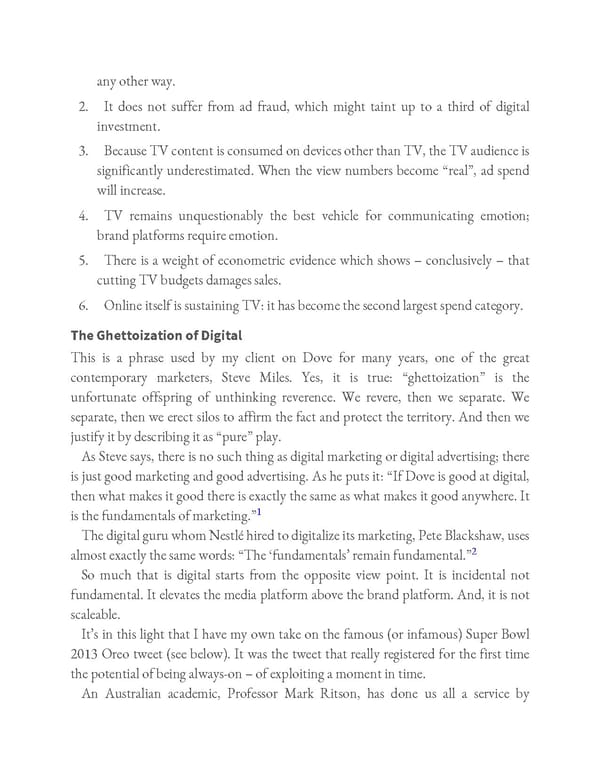any other way. 2. It does not suffer from ad fraud, which might taint up to a third of digital investment. 3. Because TV content is consumed on devices other than TV, the TV audience is significantly underestimated. When the view numbers become “real”, ad spend will increase. 4. TV remains unquestionably the best vehicle for communicating emotion; brand platforms require emotion. 5. There is a weight of econometric evidence which shows – conclusively – that cutting TV budgets damages sales. 6. Online itself is sustaining TV: it has become the second largest spend category. The Ghettoization of Digital This is a phrase used by my client on Dove for many years, one of the great contemporary marketers, Steve Miles. Yes, it is true: “ghettoization” is the unfortunate offspring of unthinking reverence. We revere, then we separate. We separate, then we erect silos to affirm the fact and protect the territory. And then we justify it by describing it as “pure” play. As Steve says, there is no such thing as digital marketing or digital advertising; there is just good marketing and good advertising. As he puts it: “If Dove is good at digital, then what makes it good there is exactly the same as what makes it good anywhere. It 1 is the fundamentals of marketing.” The digital guru whom Nestlé hired to digitalize its marketing, Pete Blackshaw, uses 2 almost exactly the same words: “The ‘fundamentals’ remain fundamental.” So much that is digital starts from the opposite view point. It is incidental not fundamental. It elevates the media platform above the brand platform. And, it is not scaleable. It’s in this light that I have my own take on the famous (or infamous) Super Bowl 2013 Oreo tweet (see below). It was the tweet that really registered for the first time the potential of being always-on – of exploiting a moment in time. An Australian academic, Professor Mark Ritson, has done us all a service by
 Ogilvy on Advertising in the Digital Age Page 68 Page 70
Ogilvy on Advertising in the Digital Age Page 68 Page 70